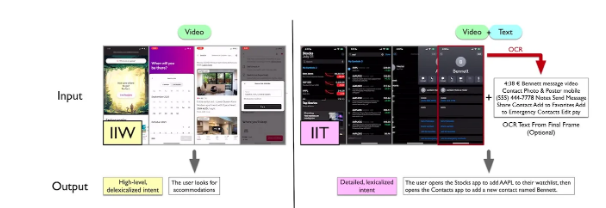With the rapid development of artificial intelligence, lightweight and efficient user interface understanding technology has become the key to AI applications. In a recently released research paper, Apple introduced a new architecture called UI-JEPA, which aims to solve the problem of efficient UI understanding on lightweight devices. This technology not only maintains high performance, but also significantly reduces computing requirements, providing new possibilities for running AI applications on resource-constrained devices. The emergence of UI-JEPA is expected to promote the widespread popularization of more convenient and private AI applications.
As artificial intelligence technology continues to advance, user interface (UI) understanding has become a key challenge in creating intuitive and useful AI applications. Recently, Apple researchers introduced UI-JEPA in a new paper, an architecture designed to achieve lightweight device-side UI understanding that not only maintains high performance, but also significantly reduces the cost of UI understanding. calculation requirements.
The challenge of UI understanding lies in the need to process cross-modal features, including images and natural language, to capture temporal relationships in UI sequences. Although multimodal large language models (MLLM) such as Anthropic Claude3.5Sonnet and OpenAI GPT-4Turbo have made progress in personalized planning, these models require extensive computing resources, huge model sizes, and introduce high latency, Not suitable for lightweight device solutions requiring low latency and enhanced privacy.

UI-JEPA's IIT and IIW data set example image source: arXiv
To further advance research on UI understanding, researchers introduce two new multimodal datasets and benchmarks: "Intentions in the Wild" (IIW) and "Intentions in the Tame" (IIT). IIW captures open-ended UI action sequences with vague user intent, while IIT focuses on common tasks with clearer intent.
Evaluating the performance of UI-JEPA on new benchmarks shows that it outperforms other video encoder models in the few-shot setting and achieves comparable performance to larger closed models. The researchers found that merging text extracted from the UI using optical character recognition (OCR) further enhanced the performance of UI-JEPA.
Potential uses of the UI-JEPA model include creating automated feedback loops for AI agents, enabling them to continuously learn from interactions without human intervention, and integrating UI-JEPA into applications designed to track user intent across different applications and modes. in the agency framework.
Apple's UI-JEPA model appears to be a good fit for Apple Intelligence, a suite of lightweight generative AI tools designed to make Apple devices smarter and more efficient. Given Apple's focus on privacy, the low cost and additional efficiency of the UI-JEPA model could give its AI assistant an edge over other assistants that rely on cloud models.
The emergence of UI-JEPA has brought new possibilities to lightweight device-side AI applications. Its advantages in privacy protection and efficient computing give it broad application prospects in future AI development and deserve continued attention.